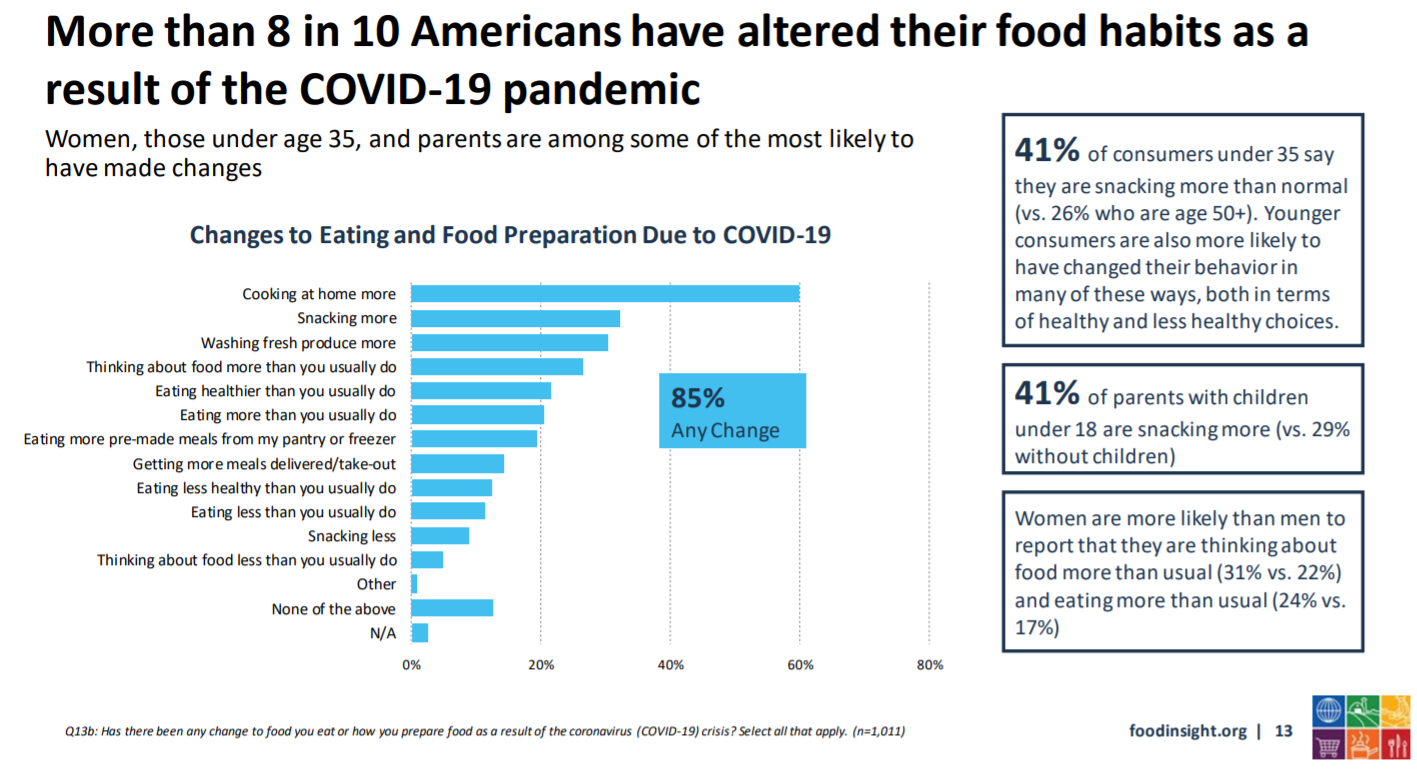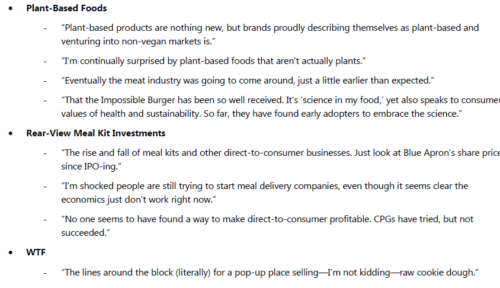What is Covid-19 doing to American food habits?
The industry-sponsored International Food Information Council (IFIC) regularly conducts surveys of consumer food buying habits.
Its latest survey was conducted in mid-April. According to the press release, the “COVID-19 Pandemic Transforms the Way We Shop, Eat and
Think About Food.”
COVID-19 has also upended almost every aspect of our daily lives, not the least of which includes our eating and food-purchasing habits. Among the 85% who have made any change, the biggest—far and away—is that 60% of Americans report cooking at home more. Respondents also say they are snacking more (32%), washing fresh produce more often (30%) and thinking about food more than usual (27%).
The survey’s chief finding:

No surprises here or in any of the other findings, but it’s nice to have the data.




